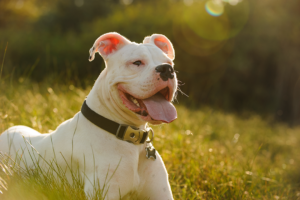A local radio station was asked if there is any science that supports the popular notion that people do look like their dogs. The radio host was surprised to find that actually there is a little bit of data on the issue.

Of course the key thing determining whether a dog and its owner look-alike would be their faces. Our own face is something which we are quite familiar with. We see it in the mirror every morning as we shave, put on makeup, or comb our hair. We see images of our face thousands of times each year as we pass by various reflecting surfaces in the environment. Science, therefore, suggests that, as in the case of everything else that we have seen many times, we should be rather fond of it. It is also likely that we will also transfer some of that sentiment to anything that is similar enough to remind us of our face. Some psychologists have argued that that explains why children who look very much like one of their parents tend to favored and treated more lovingly by that parent. It might also provide a link to why people end up with dogs that look like themselves. If the general features of one breed of dog’s face look something like the general features of our own face, then, all other things being equal, that breed should arouse a bit more of a warm and loving response on our part.
Since there had not been much scientific work done on the resemblance of dogs and their owners, a study was conducted in which 104 women students enrolled at the University of British Columbia were tested. First, they were shown slides containing portraits of four different dog breeds. Each portrait was simply the head of a dog looking toward the camera. The four dog breeds included an English Springer Spaniel, a Beagle, a Siberian Husky and a Basenji. For each dog, the women simply rated how much they liked the look of the dog, how friendly they thought it was, how loyal they thought it might be, and how intelligent it appeared to be. Afterwards questions were asked about the women and their life style. As part of this, they were asked to look at a series of schematic sketches of hair styles and to indicate which was their own most typical hair style. There was no interested in details of their coiffure, but only in certain general characteristics. Specifically they divided these hair styles into two groups. The first group contained longer hair styles that covered the ears, while the second group contained shorter hair or longer hair that was pulled back, so that the woman’s ears were visible. The results were rather interesting.
In general, women with longer hair covering their ears tended to prefer the Springer Spaniel and the Beagle, rating these breeds higher on the dimensions of likeable, friendly, loyal and intelligent. Women with shorter hair and visible ears tended to rate the Siberian Husky and the Basenji more highly on these same dimensions. The reason for this result may have to do with familiarity effects on liking. Longer hair on a woman forms a framing effect around her face, which is much the same as the framing effect caused by the longer, lopped ears of the spaniel or Beagle. Shorter hair gives more visible, unframed lines to the sides of the woman’s face and allows her to see the tips of her own ears. Both the Siberian Husky and the Basenji lack the drooped ears that frame the face like long hair, and both have clearly visible pricked ears. Obviously we are not talking about an overpowering effect on preference since there were a number of women with short hair that preferred the long eared dogs and vice-versa. However, the size of this effect is large enough to be statistically reliable and could confirm the common belief that we look like our dogs to some degree.

Leave a Reply
Your email is safe with us.